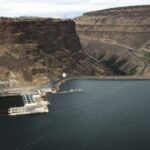WATER ROUNDUP: Toxic chemicals found in all of the water basins in Oregon; Lane Co. town sets limits on water usage.
BY JACOB PALMER | DIGITAL NEWS EDITOR
Toxic chemicals were found in all of the water basins in Oregon, according to a study by the state Department of Environmental Quality.
Some had levels deemed above the state’s benchmark for human health and aquatic life, according to the Statesman Journal.
“It’s what we somewhat expected based on what people have done in other states, including Washington and California,” she said. “It’s not a dark and grim picture. There are lots of areas where we didn’t find anything, and a lot of things were well below water quality criteria.”
The Oregon Legislature mandated the annual study in 2007.
Among the key findings:
- Currently used pesticides were found in all 15 basins examined, often as mixtures and sometimes at levels above aquatic-life benchmarks set by the EPA. The herbicide diuron was found in all but one of the basins. Legacy pesticides – those such as DDT and dieldrin that are banned or no longer produced – also were present, frequently at levels above state human health criteria.
- The Willamette and Hood basins had the most samples with at least one chemical higher than a criteria or benchmark for human or aquatic health.
- Copper and lead were present at levels above state aquatic life criteria throughout the state, but mostly in the populated areas of the Willamette Basin.
- Flame retardant chemicals, which can cause cancer, were found in both urban and rural waterways.
- Arsenic and inorganic arsenic was measured at levels above state human health criteria, mainly in Eastern Oregon and in the state’s coastal estuaries.
- Combustion byproducts known as polycyclic aromatic hydrocarbons, some of which can cause cancer, were found at levels above state human health criteria at several locations.
The chemicals come from agriculture/urban runoff, industry, wastewater treatment facilities, among other polluters, according to the SJ report.
Lane Co. town sets limits on water usage
A small Oregon town, Westfir, has declared an emergency ahead of the summer that follows a record-setting dry winter.
Officials in the Lane County city have banned all outdoor use of water like watering lawns, washing cars and filling pools, the Register-Guard reports.
Mayor Matt Meske said the city last summer asked residents to voluntarily cut back their outdoor water usage and planned to do so again this year. But he said that idea turned into an immediate mandate when the local watermaster on Friday restricted the city’s water use to domestic purposes, such as drinking and washing, to curb water withdrawal from the river and preserve the river’s flow to protect fish and water quality.
All water in Oregon is publicly owned, and the state grants landowners, agencies and others permission to divert or pump a certain volume of water at a specific location so long as it’s put to a beneficial use. Under state water law, the holders of older water rights supersede more recent ones. Westfir secured its water right to the river in 1986, three years after the water right for the river’s in-stream flow to protect fish was established, said Mike McCord, regional manager for the Oregon Water Resources Department.
The regional manager for the Oregon Water Resources Department called the move a “short-term situation.”


